Take a look at the current hot hatchback market, and one thing is clear: The hot hatch of the 2020s bears very little resemblance to the lightweight and affordable models that appeared during the genre’s 1980s boom period.
With 300bhp, kerbweights in the tonne-and-a-half range, sticky track-focused tyres, and supercar-sized brakes, modern hot hatches are undoubtedly incredible machines in their own right, but when a Civic Type-R is cracking on for fifty grand, it’s difficult not to conclude that something got lost along the way.

The race for power and status really exploded in the early 2000s as the Civic’s EP3 predecessor and cars like the Mk5 Golf GTI made 200bhp the norm. But around the same time, a growing breed of affordable, city-car and supermini-based hot hatches emerged, with spec sheets that read like some of the 1980s classics. With price tags around the £10K mark (well under £20K in today’s money), they were affordable too.
We’ve compiled some of the best of the era below. Our focus here is on small cars with revvy naturally-aspirated engines, which placed fun over straight-line speed. We’ve no doubt missed one or two, but if you’re looking for 2-litre engines, turbos, or outrageous acceleration figures, you won’t find them here…
Citroën C2 VTS
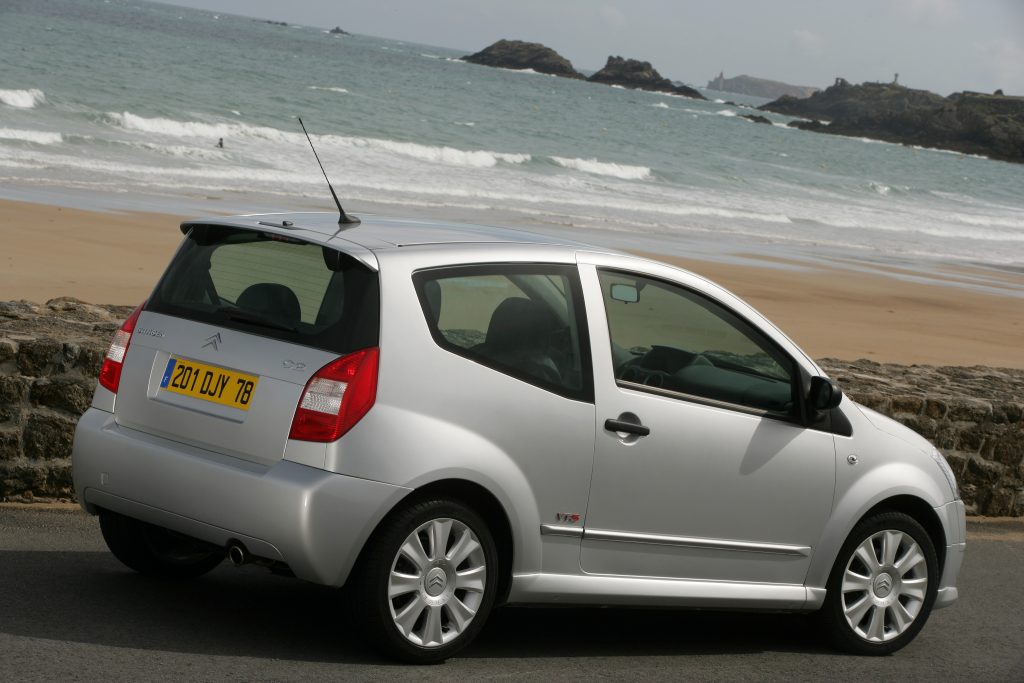
What is it? Citroën made a bit of a balls-up of the first sporty C2, the VTR. The car itself was decent, if not as back-to-basics as the Saxo it replaced, but the VTR came only with an automated-manual gearshift. The VTS fixed that, also getting a 16v head, for a proper 123bhp successor to the old Saxo VTS.
Why was it great? Not to knock the first car on our list, but the C2 wasn’t great in the same way a Saxo VTS was. It was a better car, for sure – safer, more comfortable, more accommodating, less like hard work. It just wasn’t as effervescent, though today its revvy twin-cam motor and claimed 8.1-second 0–62mph time, plus quirky mid-2000s styling, work in its favour.
What should I pay? Firstly, make sure you’re not looking at one of the diesels, as Citroën eventually stuck the VTS badge on its 1.6 HDi, and that just isn’t the same. But being somewhat underappreciated means they’re pretty affordable today. The going rate for a good one is around £2K or slightly over, and superficially at least they seem to wear the miles well.
Fiat Panda 100HP
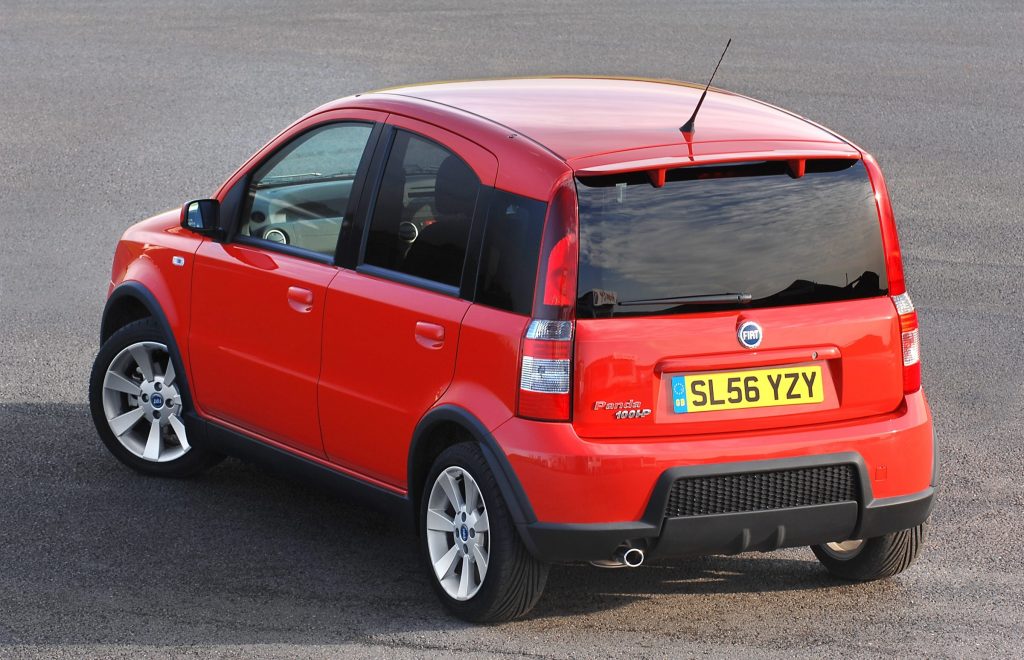
What is it? Probably the best car Fiat has made this century. Take the well-engineered second-generation Panda, stick a 1.4-litre 16v engine in the front, stiffen the suspension, jazz up the styling, and bin the Panda’s light-steering ‘City’ button in favour of a Sport button that reduces assistance and sharpens throttle response.
Why was it great? It’s just a hilarious car to drive. It’s also the archetype of an Italian hot hatch: not the most sophisticated, rides like a penny-farthing, but is geared like a bicycle, too, to keep the revvy four-cylinder in its happy place. Being small, it’s also fabulously wieldy, and the high-mounted gearshift is a joy to fling around the gate. It’s even fairly reliable.
What should I pay? 100HPs have probably passed their pricing nadir but they’re still far from expensive. Around £3K–£4K is the going rate, but people are beginning to ask more for really nice ones, as 15 years of thrashing take their toll on more neglected examples.
Ford Fiesta Zetec-S
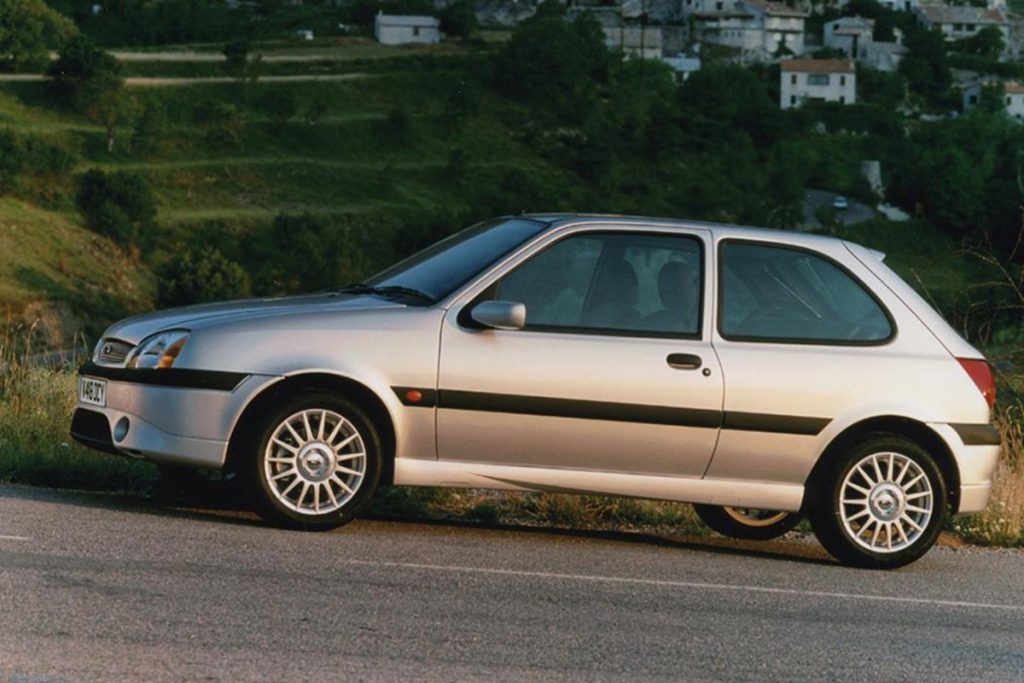
What is it? Technically launched at the end of 1999, but what’s a month or two between friends? Basically an XR2i for the 2000s, giving the aging fourth-gen Fiesta, recently facelifted, a bit more kick with a 101bhp 1.6-litre Zetec four, plus some chassis and steering bits from the universally loved Puma.
Why was it great? The Fiesta made the Puma great, so this was the Puma’s way of saying thanks. Definitely the coolest-looking fourth-gen Fiesta, and while it didn’t get the Puma’s 1.7-litre Yamaha-tweaked engine, the 1.6 was still peppy: 0–62mph came up around the 10-second mark, and handling was typical of ’90s and ’00s Fords: fun and foolproof.
What should I pay? These Fiestas are getting rare now, as they rot like any other ’90s-era Ford, albeit not quite as drastically as a Ka or Puma. People aren’t yet asking the same money as for earlier, far less competent hot Fiestas, but sellers are still asking £2K–£3K now for ones that need a bit of love.
Ford SportKa
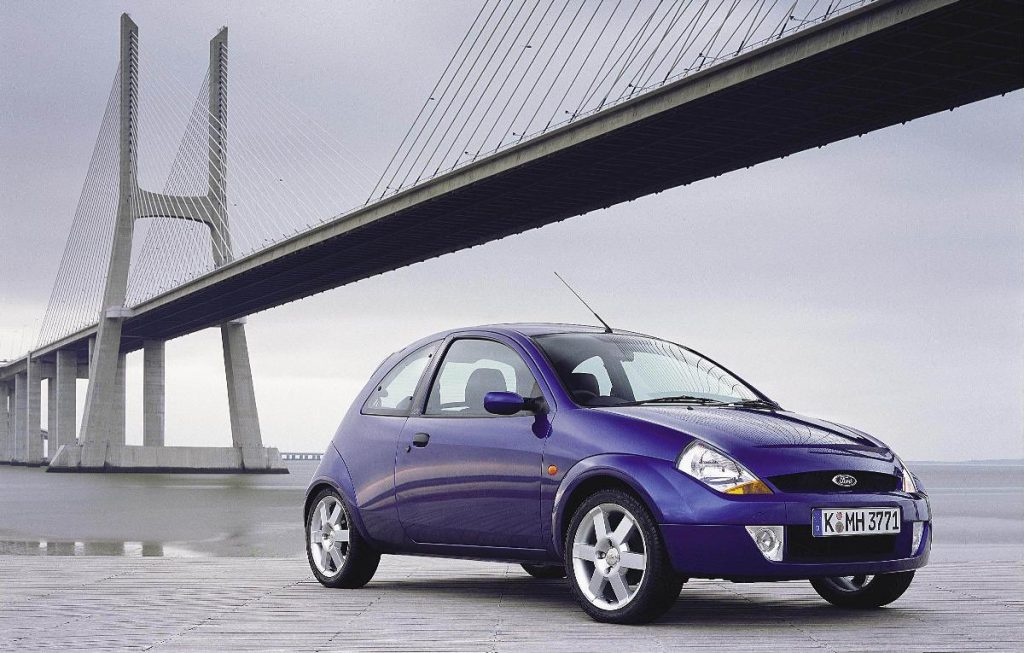
What is it? As the Fiesta grew up with the fifth-gen car in 2002, Ford thankfully filled the gap vacated by the Zetec S with a hotter Ka. The SportKa arrived in 2003 (alongside the open-topped StreetKa) with a 94bhp, eight-valve 1.6, and, like the Fiesta Zetec-S, with chassis know-how from the Puma.
Why was it great? The Ka’s chassis had always cried out for more power, and the SportKa answered that call – albeit with a still slightly underwhelming engine. Handling, ride and steering picked up where the Zetec-S and Puma had left off, and the chunky styling still looks fab today. As does the Ka’s mad interior.
What should I pay? Okay, here’s the thing. The SportKa’s survival rate is terrifyingly low. Kas rust like Alfasuds, and finding one that isn’t dissolving from the petrol filler outwards is near impossible. Ropey ones are under a grand but you need to be prepared for a project. Visually nice ones can be £2K–£3K but you’ll still need to inspect them very carefully indeed.
Mini Cooper (R50)
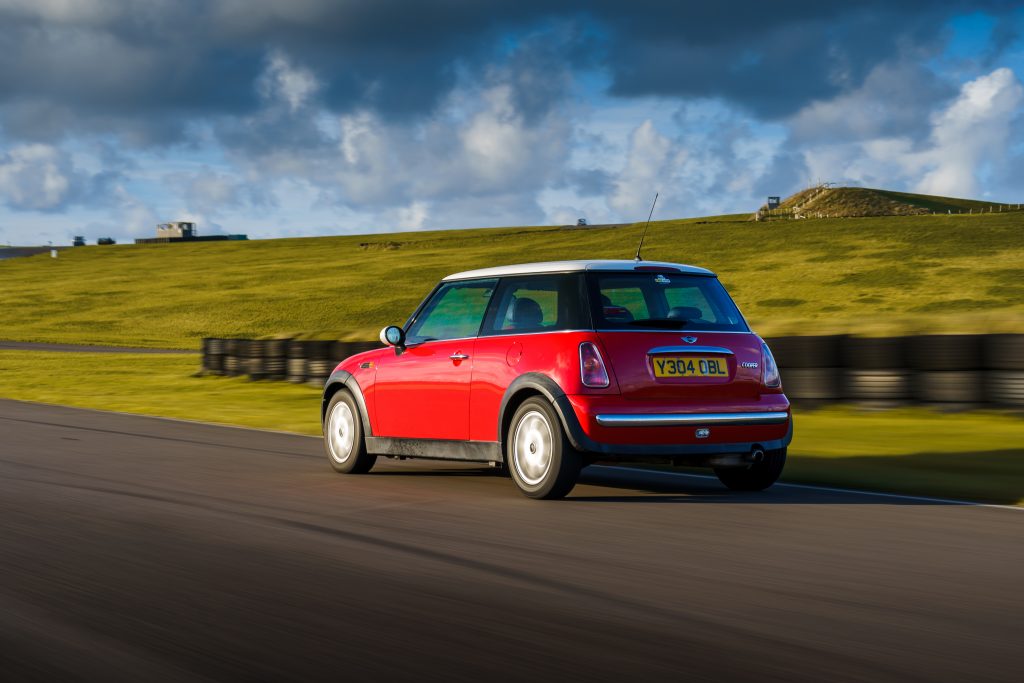
What is it? A reborn British icon that has since developed its own cult following. The R50 Mini is becoming a classic in its own right, with well-kept early cars also taking on a bit of collector appeal to add to their driver appeal.
Why was it great? Don’t believe the bores who still scorn the BMW-era Minis. The classic Mini’s great but was positively geriatric even in the 1980s, let alone by the time it died in 2000. The R50 was a genuine modern small car with much of the early car’s spirit, a fantastic ride/handling balance, and plenty of style. Long gearing blunts straight-line fizz (in non-supercharged cars at least), but the steering and balance are lovely.
What should I pay? The R50 Mini’s a recent arrival in the Hagerty Price Guide. A good one still costs under £2000, while the best in the country is barely over £4000. Collectors will usually pay a little more for really early Y-reg cars, which tended to be the marketing and press cars and had some detail differences.
Nissan Micra 160SR
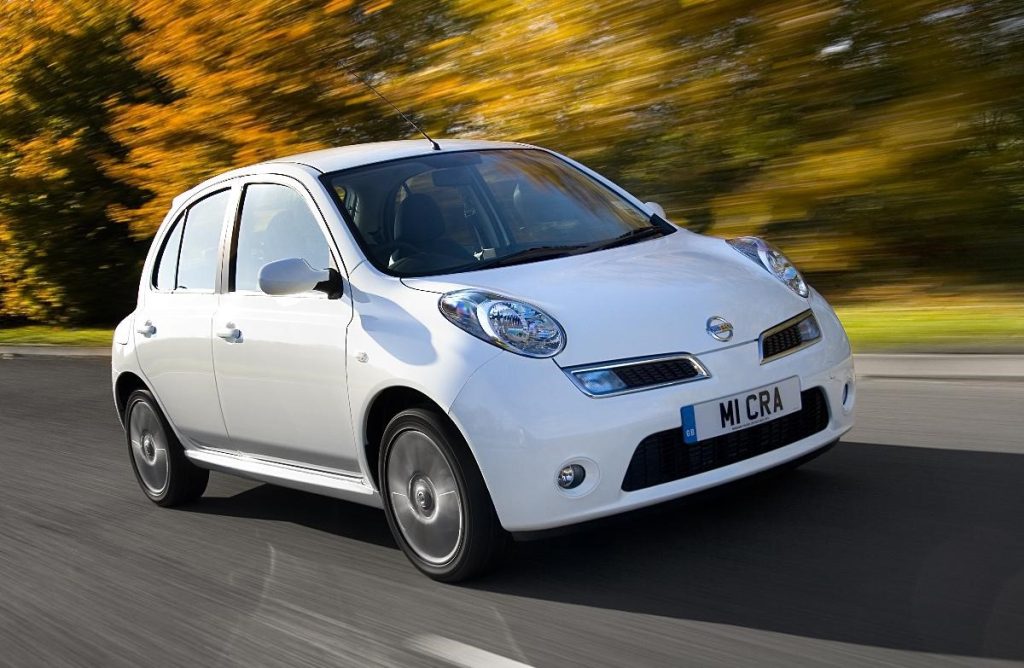
What is it? Possibly the most forgotten car on this list. Be honest, did you know Nissan made a sporty variant of the third-generation, ‘K12’ Micra? Sadly, the 160 in the name didn’t relate to its horsepower (which was 110bhp), but instead its 1.6-litre engine. The combo was still good for 0–60mph in 9.8 seconds.
Why was it great? “Great” probably oversells the 160SR’s capabilities, but it was certainly good, and maybe even better than you’d expect. It cost under £10K new in 2005, cheaper than a basic Mini or a SportKa, but had a revvier, more potent engine than either, and thanks to development here in the UK, its chassis was well set up for our B-roads. Evo magazine called it a ‘genuinely able and infectiously enjoyable car’, so there.
What should I pay? Being overlooked means 160SRs are generally pretty cheap. £2000 is usually enough to bag a decent one, though we did find one seller asking £5000 for a low-miler with a full Nissan service history. As the saying goes, ‘find another’, though realistically we’d go and find a Twingo 133 instead for that money…
Renault Sport Twingo 133
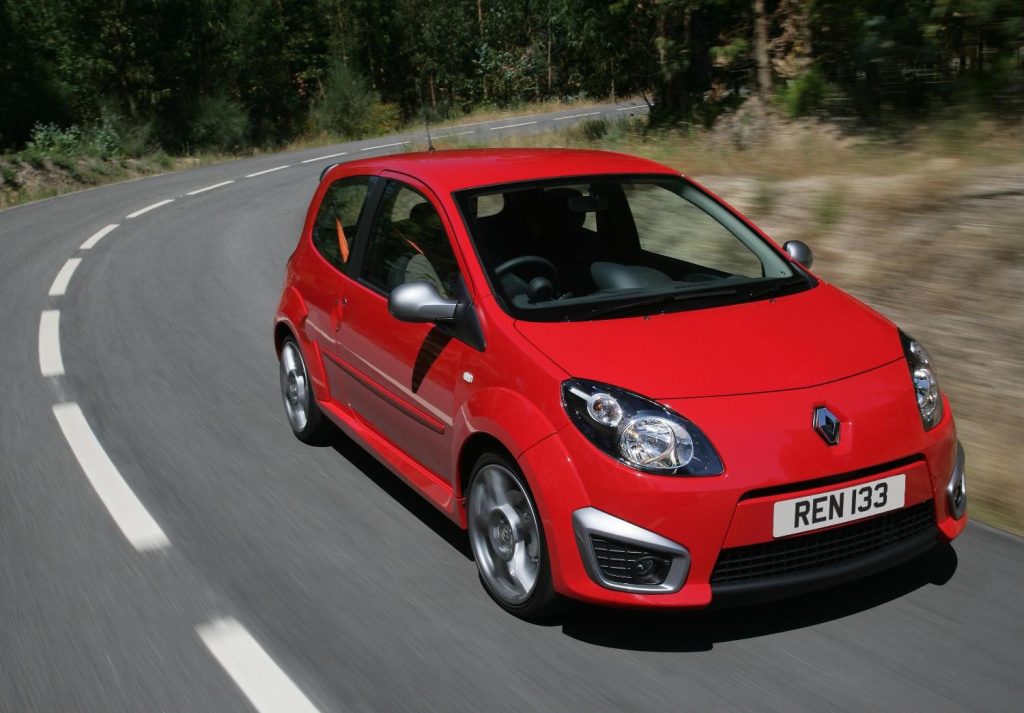
What is it? One of the most potent cars in this list, with 131bhp, or 133PS as per the name. It slotted underneath the more potent 2-litre RS Clios, instead using a revvy 1.6-litre engine. Not a design icon like the original Twingo, but much more of a driver’s car.
Why was it great? The second-gen Twingo was closely related to the second-gen Clio – you know, the one that gave us the 172, 182, and Trophy. So it’s got good bones, but it’s even more compact, has a funkier cabin, and in Cup chassis form is hard work but a proper little tearaway. Genuine Renault Sport ability in a city-friendly package.
What should I pay? 133s seem to start around the four grand mark, with the best at around six or seven. The Cup chassis pack is desirable but definitely less bumpy-road friendly, and don’t pay over the odds for the Gordini special edition – it basically amounted to some blue paintwork and a sticker set. Amédée wouldn’t be impressed.
Suzuki Ignis Sport
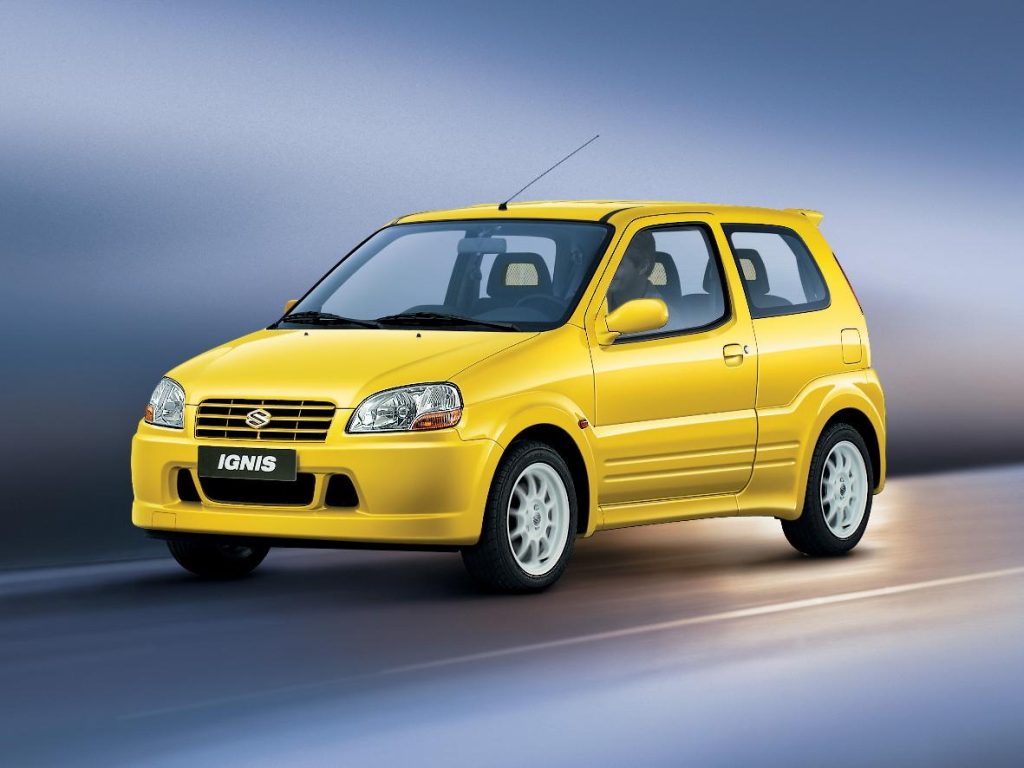
What is it? The road-going rally car everyone forgets about. Suzuki had a successful Super 1600 rallying campaign in the 2000s and the Ignis Sport was the road-going equivalent, with a 1.5-litre four cylinder making 107bhp, stiff suspension, and, ideally, bright yellow paintwork.
Why was it great? It’s as close as anyone has got to replicating the Peugeot ‘Rallye’ formula in the 21st century. The Ignis Sport was raucous and a bit rough around the edges, but a hoot to drive. In true Japanese style, Suzuki wasn’t afraid of leaning on branded cool, either: the white multi-spoke wheels were by Enkei, and the seats by Recaro. Only 945kg, too.
What should I pay? People haven’t yet woken up to the Ignis Sport, so they’re still cheap. A decent one seems to be a couple grand and great ones not much more, though bear in mind that most will have been driven hard, and some may have been modified and their original parts sold on.
Suzuki Swift Sport
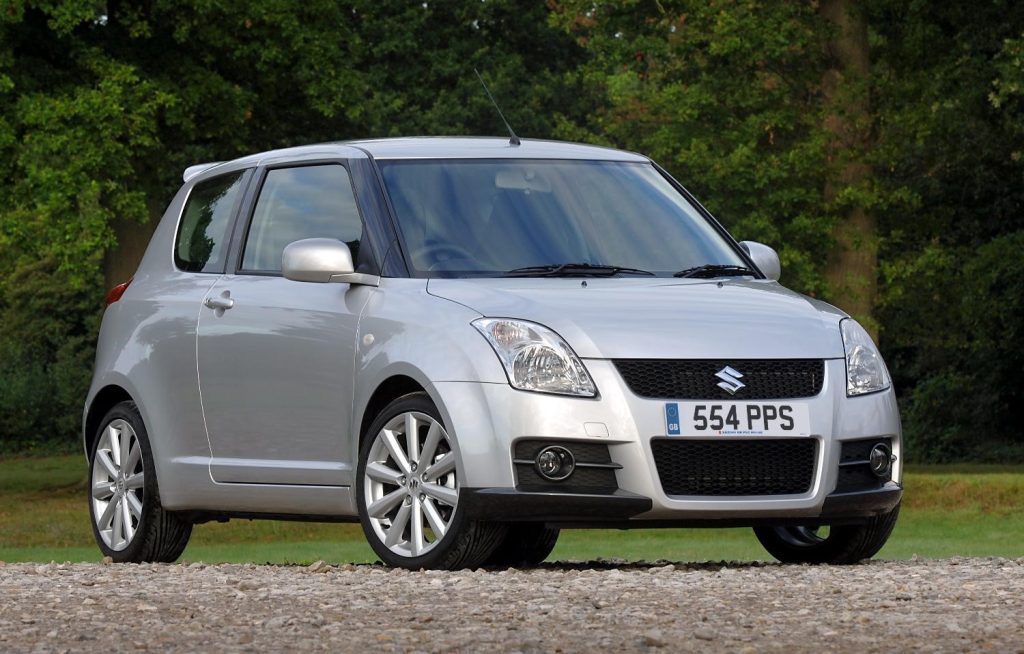
What is it? The Ignis above was replaced by the much more grown-up, sophisticated-looking Swift in 2004, and two years later, the Ignis Sport was succeeded by the first Swift Sport. Like the Ignis, the Swift amassed itself some rally heritage during its time on sale, and the S1600 rally cars were effectively based on the Sport.
Why was it great? Imagine taking the Ignis Sport’s recipe and mixing it in with some Mini-style refinement and quality, and you’ve got the Swift Sport. Its 123bhp 1.6 relied on revs (peak power was not far from 7000rpm), but the chassis was less one-dimensional than that of the Ignis, making it easier to live with but also more capable on a B-road. Chunky good looks completed the package.
What should I pay? Swift Sports are still very affordable, helped by Suzuki reprising the recipe with a new Swift in 2012. These later models are even better all-rounders which has perhaps kept prices of the 2006 cars low. You can find them for £3K, while five grand gets a really nice one.
Toyota Yaris T-Sport
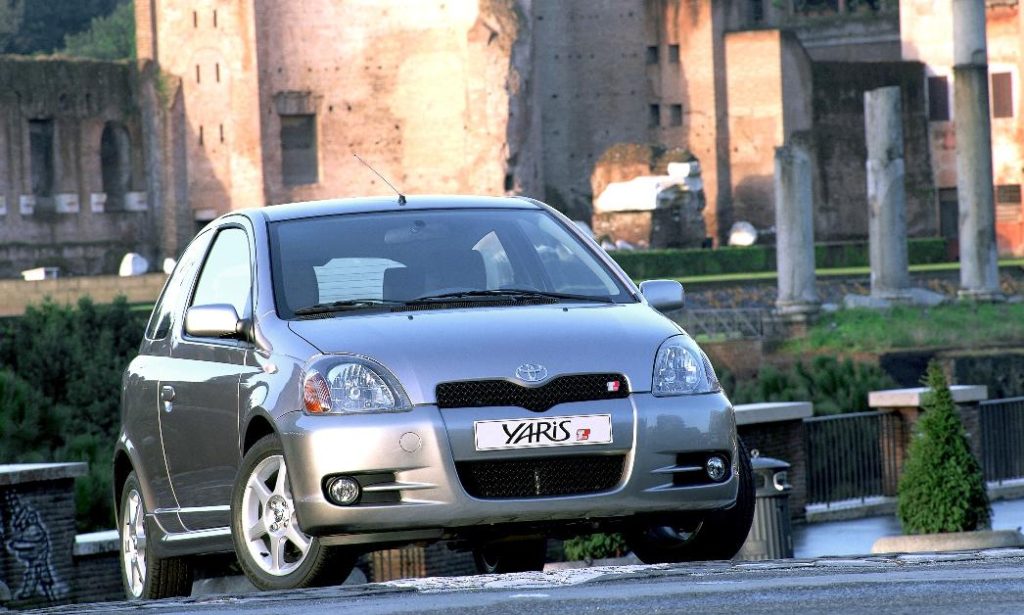
What is it? The sportiest version of the car that won European Car of the Year in 2000. Japan got a turbocharged version but ours was a 1.5-litre, 105bhp hatch with a neat bodykit and the normal Yaris’ floating LCD instruments replaced by a cute white speedometer and rev counter in the central pod.
Why was it great? We’ll attract the ire of Toyota acolytes for this, but “great” is probably overstating it. It wasn’t a frequent group-test winner, often getting bumped by Ford Pumas, Mini Coopers, and Peugeot 106 GTIs, but consider just how great those three were in period and it’s admirable the T-Sport wasn’t miles behind. And being a Toyota, you knew it would work.
What should I pay? Another slightly under-the-radar car, perhaps due to its lukewarm reception, Yaris T-Sports are cheap. Japanese car enthusiasts priced out of more desirable stuff are starting to discover them, but under £2K gets you behind the wheel and people aren’t asking much more than £3K for really nice ones.
Volkswagen Lupo GTI
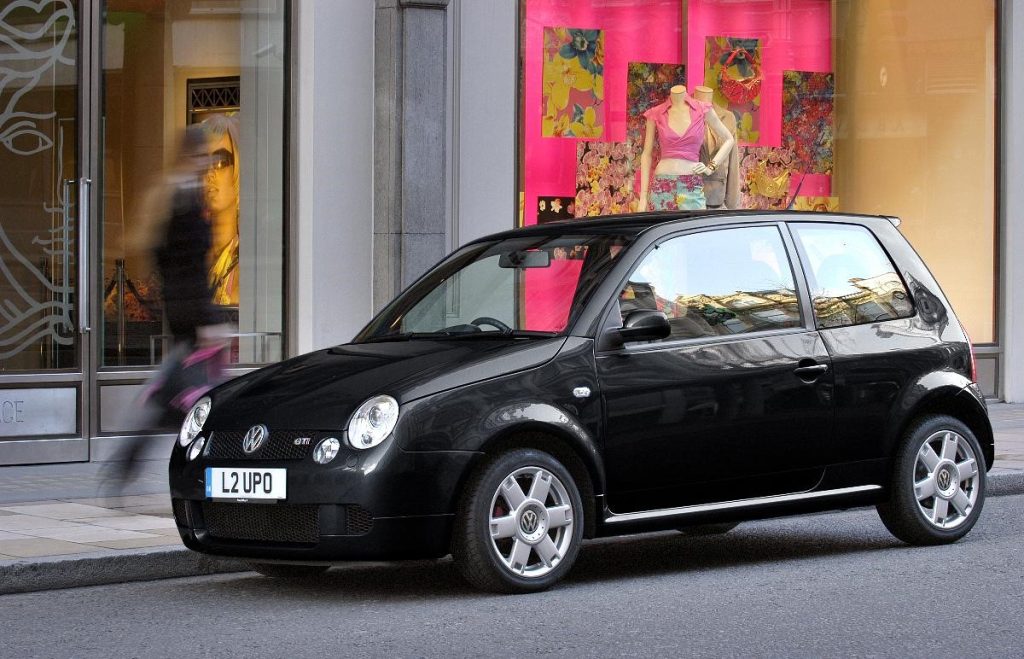
What is it? A return to what made the original Golf GTI so appealing, in much the same way the Up GTI did in 2018. A compact car with a decently powerful engine (123bhp, and 0–60mph in under eight seconds), and a chassis that could handle it, with just enough visual interest to feel special.
Why was it great? Because it really did capture that Mk1 Golf GTI spirit. A neat bodykit, six-spoke alloys, and a twin centre-exit exhaust marked it out as something special, and while it wasn’t the edgiest little hot hatch, in true VW style it was one you could easily live with, and there’s a big enthusiast scene around them these days, too.
What should I pay? Volkswagen pricing is a law unto itself, so the Lupo is one of the more expensive cars here, even if it’s not the most entertaining. Most owners are asking more than £6K for them, with the very best between £8K and £10K. For some, only a VW will do, but we’d have the Twingo or Panda and save the difference for road trips and track days.










Interesting bunch- though I notice that in the same way that the tv news today regularly talks about how racism still exists, so does motoring journalist’s stereotypical view of Italian cars. Though you include the Panda HP you can’t help likening it to the ride of a penny farthing- I didn’t notice any slight ridicule of the other cars. Also, you say the Puma ‘rusted like an Alfasud’ You mean like most 1970’s cars including the iconic Mk 1 Golf. I know this to be fact btw. Nobody ever mentions the Golf’s Italian design either. Lazy journalism really.
Apologies, it wS a Sport ka not a puma
Good article in that these are all cars most of us would completely overlook, but to be fair to us, so does Hagerty; Suzuki has two cars in this list, but doesn’t appear in the Hagerty guide at all. Are they all going in?
Hi Sidney, I’m the UK Price Guide Editor. We add new models at each quarterly update, and currently have around 50,000 year, make and models covered. Each new model needs the various submodels created, and someone allocated to maintain the value every three months. So, we’re getting there… but we haven’t yet covered every car we’d like to include. Thanks for using the Guide though, and please keep checking back!
Most forgotten the smart forfour brabus, 177 bhp 0-60 6.7
Hello Rick, sorry you feel that way about my “lazy” writing, though as a former Panda 100HP I’m *more* than qualified to talk about its terrible ride, which even beside the Cup-chassis Twingo that I’ve also driven, is comfortably the worst of any on this list. If you read all the words around that single simile, you’ll note I was otherwise very positive about the Panda, which should probably have been your takeaway from that section.
And whether or not other cars of the 1970s rusted badly, the Alfasud was particularly prone to it – Mk1 Golfs weren’t typically rotting while they were still on dealer forecourts, even if some are a bit flaky 50 years on – so however much a fan you are of those cars, it will always, sadly, be something of a yardstick for poor corrosion resistance. It is not “lazy journalism” to make passing references to things that are factual.
Hello J, thanks for the suggestion on the Smart, but as a turbocharged car with much more power than a typical 1980s hatch, you’ll see why I didn’t choose it here. As I wrote in the intro, “Our focus here is on small cars with revvy naturally-aspirated engines”.
Always on my lookout list .Yaris,Ignis and sr160.Maybe add the Citroen to that now . Missed out the Puma!!!!!